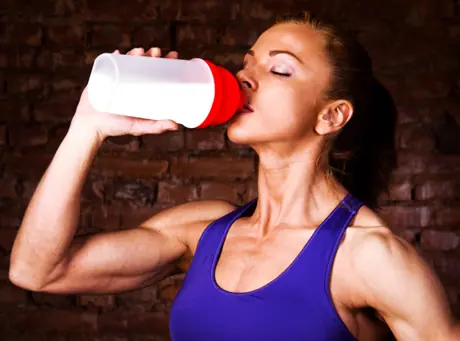
It's helpful to review how the body responds to different types of physical activity, and, specifically, what occurs metabolically when energy must get to the muscles during running.
The source of energy for all muscle contractions is adenosine triphosphate (ATP). The central limitation on one's capacity to exercise lies in the ability to maintain the availability of ATP; it's not stored in large amounts in skeletal muscle. Viable sources of ATP come from both anaerobic (doesn't require O2) and aerobic (requires O2) means. The primary energy source for a given activity mostly depends on the intensity of the muscle contractions.
More: Tips for Energy-Efficient Running
High-Intensity Exercise
High-intensity exercise of a short duration requires anaerobic sources of ATP: Phosphocreatine, as with all-out, 100-meter sprints (exercise under 30 seconds); and anaerobic glycolysis (the breakdown of glucose), which is the primary energy source for high-intensity exercise of one to three minutes (say, an 800-meter race).
Through this process the body's glycogen stores are depleted as glucose is burned. The limiting factor here isn't the depletion of glycogen stores per say—it's the accumulation of lactic acid, which is the body's by-product of burning fuel. When lactic acid builds up at a rate faster than it can be cleared from the muscles, the legs cramp up and the capacity to continue exercise severely diminishes.
More: How to Push Past Your Lactic Acid Limits
Endurance Exercise
Though glycogen stores are plentiful, their total depletion becomes an issue when exercising over 90 minutes. During a marathon, this is the point at which a runner hits the Wall. Carbo loading prior to and during an endurance event helps stave off the depletion of muscle glycogen.
More: For Distance, Count Carbs In
Fat is the energy source most abundantly available to the muscles. The supply of fatty acids may be essentially unlimited, but the rate at which their breakdown, referred to as lipolysis, can occur becomes the limiting factor in obtaining ATP.
More: Dietary Fat and Endurance Athletes
Lipolysis is able to contribute less and less to the overall energy supply as muscle contraction intensity increases. The body then begins to deplete glycogen. Once glycogen depletion occurs, exercise intensity reduces dramatically and the pain, cramping, and sluggishness associated with the Wall take hold.
More: What You Need to Know About the Bonk
However, a small decrease in intensity earlier in the exercise bout—in marathoning, this means slowing down for the race's early miles, while everyone around you is excitedly pushing the pace—often spares glycogen sufficiently to avoid total depletion. This is essential for prolonging the time your body relies on lipolysis during an endurance event, which cannot be overemphasized.
Sprint Distance
The primary energy source for sprinting distances up to 400 meters, then, is Phosphocreatine. From 400 meters to 1,500 meters, it's anaerobic glycolysis. For distances longer than 1,500 meters, athletes rely primarily on aerobic metabolism. Understanding what happens to the body at different exercise intensities and distances can help you recognize and avoid the limitations of each energy system for the best effects on your training and racing.
(NISMAT Exercise Physiology Corner: Energy Supply for Muscle, 2005, The Nicholas Institute of Sports Medicine and Athletic Trauma at Lenox Hill Hospital, www.nismat.org)
American Running Association, Running & FitNews 2005, Vol. 23, No. 5
More: When Do I Run at Race Pace?
 Sign up for your next race.
Sign up for your next race. About the Author
Get ACTIVE on the Go


Couch to 5K®
The best way to get new runners off the couch and across the finish line of their first 5K.
Available for iOS | Android






Discuss This Article